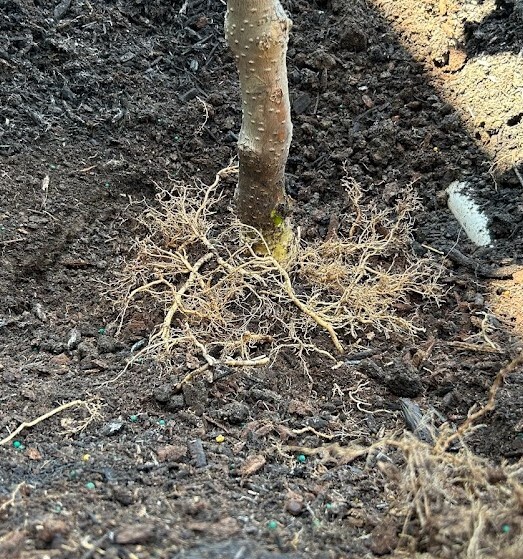Bare the Flare for Healthy Trees and Shrubs

By Chris OlsonChris Olson, BCMA | TRAQ WE-12363BBCMA | TRAQ WE-12363
Young trees are dying every day from secondary opportunistic pests. Many are unaware as the symptoms can be random.
– Crown die back.
– Chlorotic foliage.
– Below average crown density.
– Scorched foliage.
– Drought stress.
– Small foliage.
– Pathogen proliferation.
– Multifarious insect populations.
– Premature nutrient translocation and leaf abscission.
Uncovering the root crown is the answer. Getting the flare of the trunk (the base transition to root system) exposed on a tree is required for the tree or shrub to reach maturity. Every tree will be affected differently by a buried root system crown (collar) and the symptoms may not show for 10 years or so. If a tree is showing symptoms shortly after installation, immediate correction becomes much more critical.
You will only want to uncover the tops of the buttress/feeder roots and it’s important to note that there may be some stress from doing so. Watering aggressively for a year or two post excavation should offset this stress. It is important to use only a hose and your hands. Tools easily damage large roots and the wood of a stem which is often dysfunctional.
The goal is to allow stem gas exchange so don’t worry about how far away from the tree you go at first (you may have larger roots higher in the soil profile that you don’t want to damage further away from the tree). When removing the excess soil, you may run into small non woody roots. Do not be concerned if these are removed. They are only there as a response as the tree attempts to keep the soil dry, allowing for stem gas exchange. (Pore space in soil provides limited air available to the tree).
Once completed, the base of the tree should look like that of an inverted wine glass and you’ll want to keep it this way. Adding mulch is like adding soil so keep it away from the stem.

